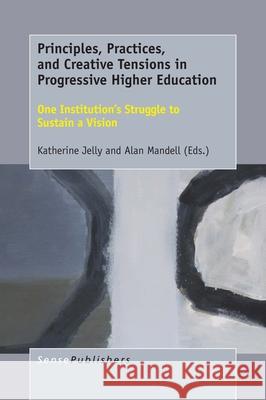Principles, Practices, and Creative Tensions in Progressive Higher Education » książka
Principles, Practices, and Creative Tensions in Progressive Higher Education
ISBN-13: 9789463008839 / Angielski / Twarda / 2017 / 422 str.
Principles, Practices, and Creative Tensions in Progressive Higher Education
ISBN-13: 9789463008839 / Angielski / Twarda / 2017 / 422 str.
(netto: 419,90 VAT: 5%)
Najniższa cena z 30 dni: 423,64
ok. 30 dni roboczych
Dostawa w 2026 r.
Darmowa dostawa!
In this multi-faceted case study of one progressive institution of adult higher education, the editors and contributors to the volume lay out significant challenges confronting not just non-traditional post-secondary colleges and universities but all institutions of higher education in today's rapidly changing context. Contending that nontraditional institutions are especially challenged in these turbulent times, they argue that these organizations' distinctive academic programs are among the most threatened in the landscape of higher education today. The 19 essays that make up this volume highlight and examine key creative tensions, rich interplays of emphases and values in higher education, in order to illuminate and address more intentionally the questions that we must address: Can we make constructive use of these tensions? Can we recognize what is at stake? And can we chart a course that will both respond innovatively to rapid change and sustain a vision and the purposes and principles on which that vision rests? Taken as a whole, this volume sheds light on the questions and creative tensions that can, with thoughtful attention, help to keep an alternative, progressive vision of adult higher education alive.
In this multi-faceted case study of one progressive institution of adult higher education, the editors and contributors to the volume lay out significant challenges confronting not just non-traditional post-secondary colleges and universities but all institutions of higher education in today’s rapidly changing context. Contending that nontraditional institutions are especially challenged in these turbulent times, they argue that these organizations’ distinctive academic programs are among the most threatened in the landscape of higher education today.The 19 essays that make up this volume highlight and examine key creative tensions, rich interplays of emphases and values in higher education, in order to illuminate and address more intentionally the questions that we must address: Can we make constructive use of these tensions? Can we recognize what is at stake? And can we chart a course that will both respond innovatively to rapid change and sustain a vision and the purposes and principles on which that vision rests? Taken as a whole, this volume sheds light on the questions and creative tensions that can, with thoughtful attention, help to keep an alternative, progressive vision of adult higher education alive.











